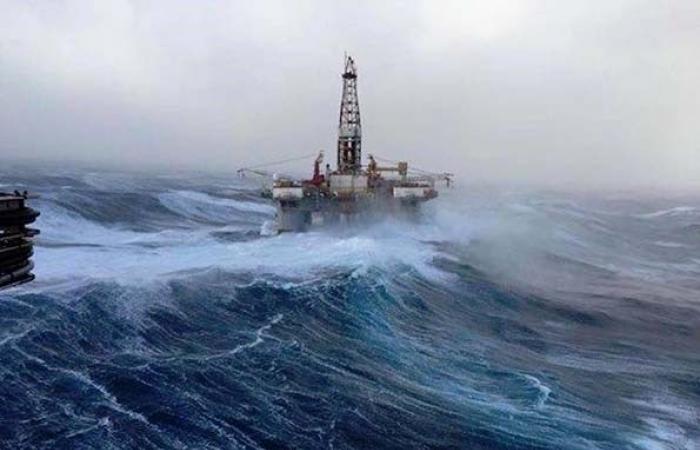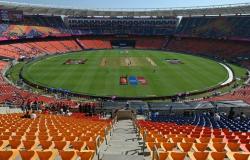
None of the reasons that analysts point out as justification for this downward correction in Brent, the main reference for Angolan raw materials, is structural, being just a slight cooling at night that will end with the sun rising above the horizon throughout the day.
It was the North American dollar, which resists the Russian, Chinese, Indian and Brazilian attacks, among other powers in the Global South, and on Tuesday it gained muscle against competing currencies, which every time it happens, without exception, leads to losses in the crude markets.
This is because a country like India, for example, buys part of its oil from Nigeria, the payment is made in USD, and for that, at the moment, it needs more rupees to buy the dollars with which it will purchase the material. cousin.
The other factor that cooled the markets was the investors’ choice to collect dividends given the appetizing prices, injecting crude into the market, diluting the difference between supply and demand, which is, still and, probably, forever, what, in the end, decides the value of the barrel.
As usual, these indirect impulses influence the markets but are not robust enough to prevent “normality” from re-imposing itself, influenced by the war in Gaza, the conflict in Ukraine, the improvement in data from the Chinese and North American economies. …
And the ironclad policy of OPEC+ to keep markets balanced and tilting towards their interests, through cuts in production, or even the signals coming from the FED and the European Central Bank that key interest rates are going up or down. to go down.
Therefore, it is not 100% certain, but it is normal that the 87.60 USD that a barrel of Brent was worth in the middle of the afternoon on Tuesday will be seen again on the screens in London in the middle of the afternoon of this Wednesday or, in Thursday morning, the 21st, because the reasons from then… are still there.
For now, around 10:00 today, Luanda time, a barrel of Brent was worth 86.91 USD, 0.54% less than at yesterday’s close, but, in line with what was said above, already recovering from the initial fall, when it arrived, early, at 86.80 USD.
This is because, after finishing the “meal” of investors who reaped the rich dividends of the last few days, even weeks, always rising, next comes digestion and the appetite soon takes over, with new injections of capital into the raw material, but not only.
Furthermore, in Russia, the 2nd largest exporter in the world, after the Saudis, some of its refineries in the west of the country continue to be attacked by Ukrainian drones to the point that two of the largest are among the five where explosions occurred.
These explosions removed from circulation close to 8% of the refined products exported daily by Russia to its new markets in Asia, after the Europeans had self-flagellated with the sanctions imposed on the Russians from whom they stopped purchasing, in addition to crude and gas. , its refined.
But as the energy business is global, if the blanket is short, when you pull it up to cover your face, it reveals itself at the bottom, which is like saying, if the Asian giants don’t have Russian energy, they will buy it… . on the feet.
An effect that reaches the markets translated into dollars and not into politics, as demonstrated by the fact that both Europeans and North Americans have officially removed Russia from the list of their energy suppliers but are purchasing it through back doors.
In addition to this element, which keeps the markets on edge, which is what drives the barrel, Israel’s war in Gaza continues to inject adrenaline among traders, starting with the shrapnel that falls into the Suez Canal, in the form of rebel attacks. Houthis to ships crossing the Black Sea.
And, for now, neither the war in Ukraine has been resolved nor the conflict in Gaza started the fade out expected given the “genocide”, a crime of which Israel is being accused at the ICJ, in The Hague, by South Africa et altwo pliers tightened on the sensitive parts of the oil markets.
Furthermore, as Reuters reports this Wednesday, 20th, fuel and crude stocks in the USA have been falling slowly but progressively for weeks, although with natural positive fluctuations in between, which translates into good momentum for the largest economy worldwide.
However, given this mountain of adrenaline that fell on the markets during the last few hours, when the Brent barrel continued, routinely, as expected, (see here) for 90 USD and beyondin Angola, the Government of João Lourenço and his economic team are smiling.
And the math is simple to do
Despite having recently left OPEC, Angola, which is one of the producers and exporters that most depend on the raw material in the world, due to the lack of economic diversification, having Brent at 86 USD allows, although not the definitive antidote, dilute some of the devastating effects of the exchange rate and inflationary crisis, especially as the country also faces the problem of a persistent reduction in daily production.
With OGE 2024 prepared with an average reference value for a barrel of 65 USD, these current values allow for relative optimism, but increasing production is the key factor, which became easier after Angola, last December, announced the departure of a member of OPEC, which leaves a possible increase in production outside the limits imposed by the cartel on its members as a way of keeping markets balanced between supply and demand.
Crude still accounts for around 90% of Angolan exports, 35% of the national GDP and 60% of the country’s tax revenues, which makes this sector not only important but strategic for the Executive.
The President of the Republic, João Lourenço, hopes, in the short and medium term, of achieving the objective of increasing national production, currently close to 1.12 mbpd, generating more revenue in the sector in order to, for example, It’s been done for years in countries like Saudi Arabia or the UAE to use oil money to free the national economy from dependence on… oil.
The increase in national production is not being held back due to a lack of potential, because the estimated reserves are nine billion barrels and were already higher than 1.8 mbpd just over a decade ago, the problem is clearly the disinvestment of the majors operating in the country.
In fact, the Government of João Lourenço also has as a cause for concern a continued and expected reduction in oil production, which is estimated to be in the order of 20% in the next decade, currently being just above 1.1 million barrels per day (mbpd), far from its historical maximum of 1.8 mbpd in 2008.
Behind this decline, among other factors, disinvestment across the entire sector, from research to maintenance, when it is known that the national offshore, with the fields in operation, has been in decline for several years due to its aging, or in other words, due to the loss of crude oil to extract and multinationals are not showing the interest they have seen in recent decades in investing in the country.
The issue of the urgent energy transition, due to climate change, with fossil fuels being the bad guys, is another factor that is blurring the importance of the oil sector in Angola.





